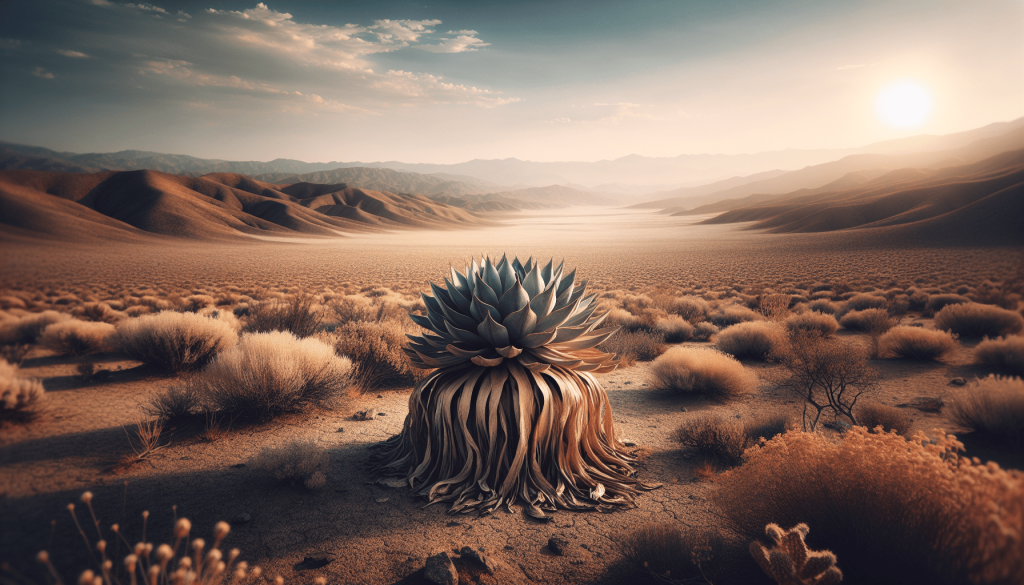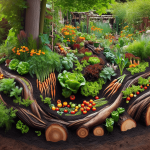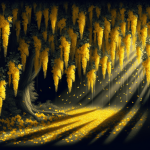This post may contain affiliate links. As an Amazon Associate, we may earn commissions from qualifying purchases.
In search of some hardy plants that can withstand dry climates? Look no further! This article provides you with a range of drought-tolerant options that will thrive even in the most arid conditions. Whether you’re facing water restrictions or simply want to reduce the amount of watering needed for your garden, these resilient plants are sure to add beauty and greenery to your landscape. Say goodbye to worrying about water scarcity, and say hello to a vibrant and low-maintenance garden. If you live in a dry climate, you know how challenging it can be to maintain a lush and thriving garden. Thankfully, there are plenty of plants that are well-suited to withstand drought conditions. In this article, we’ll explore a variety of drought-tolerant plants that will not only survive but thrive in dry climates. From cacti to perennial flowers, we’ve got you covered!
Cacti
When it comes to drought-tolerant plants, cacti are often the first that come to mind. These unique and prickly plants have adapted to arid conditions and are perfect for those looking to add some desert vibes to their gardens. Among the different types of cacti, the Opuntia, Echinocactus, and Mammillaria are particularly noteworthy.
Opuntia
Opuntia, also known as the prickly pear cactus, is a popular choice for dry climates. With its flat, paddle-shaped stems and vibrant flowers, Opuntia adds a touch of beauty to any garden. This cactus is known for its ability to store water and thrive in extreme heat.
Echinocactus
Echinocactus, commonly known as the golden barrel cactus, is another excellent choice for dry climates. This cactus features a strikingly spherical shape and golden spines that give it a unique aesthetic appeal. Echinocactus is incredibly low maintenance and can tolerate long periods of drought.
Mammillaria
Mammillaria is a diverse genus of cacti known for its small, clustered globular shape and spiny texture. These cacti come in a wide range of shapes and sizes, making them a versatile choice for dry gardens. Mammillaria can endure extended dry spells and still produce beautiful flowers in various colors.
Succulents
Succulents are renowned for their ability to store water in their leaves, stems, and roots, making them ideal for dry climates. These plants come in numerous shapes, sizes, and colors, allowing you to create a visually stunning garden. A few popular drought-tolerant succulents include Aloe Vera, Sedum, and Agave.
Aloe Vera
Aloe Vera is a well-known succulent famous for its medicinal properties. Not only does it provide relief for sunburns and minor cuts, but it also thrives in dry climates. Aloe Vera’s plump, fleshy leaves store moisture, allowing it to endure long periods without water.
Sedum
Sedum, commonly known as stonecrop, is a versatile succulent that can adapt to various growing conditions. With its fleshy leaves and vibrant blooms, Sedum adds a pop of color to any garden. These plants are incredibly low maintenance and can thrive in both drought and poor soil conditions.
Agave
Agave is a striking succulent that comes in a wide variety of shapes and sizes. Its rosette-shaped leaves and sharp spines make it a visually captivating addition to a dry garden. Agave has a remarkable ability to tolerate drought and extreme temperatures, making it a top choice for arid climates.

Drought-tolerant Grasses
Grasses can sometimes be overlooked when it comes to drought-tolerant plants, but there are several varieties that can withstand dry conditions. These grasses offer beauty, texture, and help prevent soil erosion. Buffalo Grass, Blue Grama Grass, and Festuca are excellent choices for dry climates.
Buffalo Grass
Buffalo Grass is a warm-season grass known for its ability to withstand drought and harsh conditions. Its dense, low-growing foliage requires minimal water, making it an ideal choice for dry regions. Buffalo Grass also thrives in sunny areas, making it perfect for open lawns or yards.
Blue Grama Grass
Blue Grama Grass is a native grass that is well-suited for dry climates. Its distinctive seed heads resemble delicate feathers, adding a unique visual element to your garden. This grass has excellent drought tolerance and can establish deep roots, allowing it to survive even in limited water availability.
Festuca
Festuca, also known as fescue grass, is a versatile option for dry climates. Its fine, blue-green foliage creates a pleasing visual contrast in the garden. Festuca is known for its drought resistance, low water requirements, and ability to adapt to various soil conditions, making it an excellent choice for those looking for a low-maintenance grass.
Drought-tolerant Shrubs
Shrubs are perfect for adding structure and beauty to your garden while requiring less water than other plants. Lavender, Rosemary, and Cistus are popular choices for drought-tolerant shrubs.
Lavender
Lavender is a fragrant and visually stunning shrub that thrives in sunny and dry climates. Its beautiful purple flowers and aromatic scent make it a favorite among gardeners. Lavender is well-known for its ability to tolerate drought conditions and requires minimal watering once established.
Rosemary
Rosemary is an evergreen shrub with aromatic needle-like leaves that add both visual appeal and culinary value to your garden. This drought-tolerant shrub can handle extended dry spells and thrives in sunny locations. Its versatility and low water requirements make it an excellent choice for gardens in dry climates.
Cistus
Cistus, commonly known as rockrose, is a drought-tolerant shrub that offers an array of beautiful flowers in various colors. These shrubs are known for their ability to thrive in dry, hot climates with minimal water requirements. Cistus is also deer-resistant and attracts pollinators, making it a great addition to any garden.

Drought-tolerant Trees
Trees provide shade, improve air quality, and act as focal points in a garden. If you live in a dry climate, it’s essential to choose trees that can withstand drought conditions. Olive Tree, Palo Verde, and Mesquite are three excellent choices for drought-tolerant trees.
Olive Tree
Olive trees are known for their ability to thrive in warm and dry climates. These trees have silvery-green leaves and produce delicious olives. Olive trees are incredibly drought-tolerant once established and can add a Mediterranean touch to your garden.
Palo Verde
Palo Verde trees are native to the southwestern United States and are exceptionally well-adapted to dry climates. Their unique yellow-green bark and soft, lacy foliage create a visually striking landscape. Palo Verde trees can withstand heat and drought, making them an excellent choice for arid regions.
Mesquite
Mesquite trees are iconic in desert landscapes and are well-known for their drought tolerance. These trees have feathery foliage and provide shade with their wide-spreading canopies. Mesquite trees can survive in extreme temperatures and soil conditions, making them perfect for dry climates.
Perennial Flowers
Perennial flowers are a fantastic addition to any garden, providing year after year of vibrant blooms. These flowers require less water than annuals and can thrive in dry climates. Yarrow, Lavender Cotton, and Russian Sage are three beautiful choices for drought-tolerant perennial flowers.
Yarrow
Yarrow is a hardy perennial flower that thrives in dry conditions. This flower produces clusters of delicate flowers in various colors, including white, yellow, and pink. Yarrow is drought-tolerant, attracts pollinators, and can be used in cut flower arrangements, making it a versatile choice for any garden.
Lavender Cotton
Lavender Cotton, also known as Santolina, is a perennial plant with silver-gray foliage and small, yellow button-like flowers. This drought-tolerant plant is well-suited for dry climates and can add a touch of elegance to your garden. Lavender Cotton also has a pleasing, aromatic fragrance.
Russian Sage
Russian Sage is an attractive perennial flower with silver-gray foliage and tall, lavender-blue flower spikes. This flower not only adds visual interest to your garden but also attracts pollinators like bees and butterflies. Russian Sage is known for its drought tolerance, making it a popular choice for dry climates.
Annual Flowers
While perennial flowers are long-lasting, annual flowers provide bursts of color and variety for a single growing season. They can be a great addition to any garden in a dry climate. Zinnia, Marigold, and Portulaca are three popular choices for drought-tolerant annual flowers.
Zinnia
Zinnias are vibrant and colorful annual flowers that thrive in hot and dry climates. They produce large, daisy-like flowers in various shades of red, yellow, pink, and orange. Zinnias are drought-tolerant and attract butterflies, making them a delightful addition to any garden.
Marigold
Marigolds are a classic choice for a drought-tolerant annual flower. Their bright orange and yellow flowers add a pop of color to any garden. Marigolds are well-known for their ability to tolerate heat and dry conditions, making them an excellent choice for hot and arid climates.
Portulaca
Portulaca, also known as moss rose, is a low-growing annual flower with vibrant, jewel-toned flowers. Its succulent-like leaves and ability to store water make it perfect for dry climates. Portulaca can withstand extreme heat and full sun exposure, making it an excellent choice for garden borders, containers, or hanging baskets.
Herbs
Growing your own herbs can be a rewarding and cost-effective way to enhance your cooking. Many herbs are naturally drought-tolerant and can thrive in dry climates. Thyme, Sage, and Oregano are three popular choices for drought-tolerant herbs.
Thyme
Thyme is a versatile herb that adds a delightful fragrance and flavor to your culinary creations. This low-growing herb has small, aromatic leaves and can thrive in dry and sunny conditions. Thyme is known for its drought tolerance and can be used in a variety of dishes, from savory meats to aromatic soups.
Sage
Sage is an aromatic herb with silvery-gray leaves and a distinct flavor. It is a popular choice for seasoning various dishes and can be dried and stored for future use. Sage is well-suited for dry climates and requires minimal watering once established.
Oregano
Oregano is a flavorful herb that adds a savory taste to Italian and Mediterranean cuisines. This herb has small, oval leaves and can thrive in dry and rocky conditions. Oregano is known for its drought tolerance and can be used fresh or dried for cooking.
Ground Covers
Ground covers are low-growing plants that can help prevent soil erosion, conserve water, and add visual interest to your garden. Ice Plant, Creeping Thyme, and Lantana are three popular choices for drought-tolerant ground covers.
Ice Plant
Ice Plant, also known as Delosperma, is a succulent ground cover with vibrant, daisy-like flowers. It is well-suited for dry climates and can withstand extreme heat and drought conditions. Ice Plant is ideal for covering large areas, slopes, or rock gardens.
Creeping Thyme
Creeping Thyme is a versatile ground cover that forms a dense, colorful carpet of fragrant foliage. This low-maintenance plant is perfect for dry climates and can handle light foot traffic. Creeping Thyme is known for its drought tolerance and can be used to add visual interest between stepping stones or as an edging plant.
Lantana
Lantana is a beautiful and drought-tolerant ground cover known for its profusion of colorful flowers. This fast-growing plant attracts pollinators like butterflies and hummingbirds and can add a vibrant touch to any garden. Lantana is ideal for hot and dry climates and requires minimal water once established.
Vines
Vines offer a unique way to add vertical interest to your garden and create natural screens or shade. Bougainvillea, Wisteria, and Clematis are three popular choices for drought-tolerant vines.
Bougainvillea
Bougainvillea is a striking vine that comes in various vibrant colors, including pink, purple, and orange. This drought-tolerant plant thrives in hot and sunny climates and can be trained to climb walls or trellises. Bougainvillea adds a tropical touch to any garden and is known for its show-stopping display of vivid blooms.
Wisteria
Wisteria is a woody vine known for its cascading clusters of fragrant flowers in shades of purple, blue, and white. This vine requires a sturdy support structure and thrives in dry climates. While it can take a few years to establish, once matured, Wisteria provides a visually stunning display.
Clematis
Clematis is a versatile vine with an extensive range of flower shapes and colors. This drought-tolerant plant can add a touch of elegance to any garden. Clematis is known for its ability to thrive in dry climates and can be trained to climb walls, fences, or trellises.
With these drought-tolerant plants, you can create a beautiful and thriving garden even in the driest of climates. These plants offer an array of colors, textures, and fragrances, making them perfect for any garden style. Whether you prefer the unique beauty of cacti, the vibrant blooms of flowers, or the versatility of herbs, there is sure to be a drought-tolerant plant that suits your preferences. So embrace the arid conditions and turn your dry climate garden into a stunning oasis.








